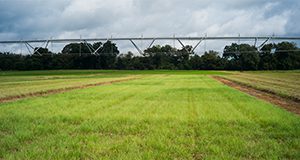Abstract
A wireless sensor network (WSN) is a system designed to remotely monitor and control a specific phenomenon or event. This new 2-page fact sheet discusses the advantages that the WSN has over traditional stand-alone sensors and controllers, power consumption and conservation, and WSN technologies. Written by Clyde Fraisse, Janise McNair, and Thiago Borba Onofre, and published by the UF/IFAS Department of Agricultural and Biological Engineering, January 2018.
http://edis.ifas.ufl.edu/ae521
References
Akyildiz, I. F., W. Su, Y. Sankarasubramaniam, and E. Cayirci. 2002. "Wireless sensor networks: a survey." Comput. Netw. 38(4): 393-422. https://doi.org/10.1016/S1389-1286(01)00302-4
Aqeel-ur-Rehman, Abu Zafar Abbasi, Noman Islam, and Zubair Ahmed Shaikh. 2014. "A review of wireless sensors and networks' applications in agriculture." Computer Standards & Interfaces 36(2): 263-270. https://doi.org/10.1016/j.csi.2011.03.004
Digi International Inc. 2017. "900 MHz versus 2.4 GHz." Accessed on February 2, 2017. https://www.digi.com/resources/standards-and-technologies/rfmodems/frequency-comparison
Yick, Jennifer, Biswanath Mukherjee, and Dipak Ghosal. 2008. "Wireless sensor network survey." Comput. Netw. 52(12): 2292-2330. https://doi.org/10.1016/j.comnet.2008.04.002
Unless otherwise specified, articles published in the EDIS journal after January 1, 2024 are licensed under a Creative Commons Attribution-NonCommercial-NoDerivs 4.0 International (CC BY-NC-ND 4.0) license.


